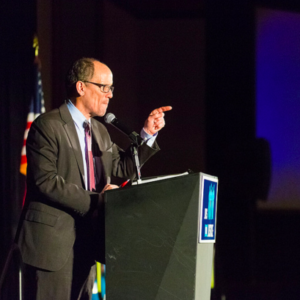In the closing act of the Obama administration, federal agencies are rushing to finalize regulations. Notably, the regulators over at the Department of Labor are working overtime to impose costly rules with little consideration of how they may harm workers and job creators.
According to Regulation Rodeo, a project of the American Action Forum, in just 2016, the Labor Department added $44.8 billion in finalized regulatory costs that create 36 million hours of paperwork burden hours on employers.
These are huge costs that cause very real pain on the economy and opportunities for Americans. The sad truth is that many of the regulations are unnecessary. They fail to support a public purpose or even achieve the goals they set forth. Proponents of the regulatory state often counter that the benefits of rules offset the massive cost of government dictates. Well, that is usually not the case.
On October 24, 2016, the U.S. District Court in Texas blocked Labor and Federal Acquisition Regulatory Council regulations that implement an Obama executive order that would institute new reporting requirements on federal contractors. The rules require contractors who bid on federal contracts in excess of $500,000 to report alleged and actual labor violations over the last three years. Reported violations of any of the 14 federal labor statutes may be used to block a company’s bid.
With a rosy name like the Fair Pay and Safe Workplaces rule, known to the business community as the blacklisting rule, there must be some benefits, right? According to the president’s executive order, the rule purportedly increases efficiency and cost savings by ensuring that federal contractors are complying with labor laws. However, according to the government’s Regulatory Impact Analysis, “there were insufficient data to accurately quantify the benefits presented.” And the federal government even asked for more data to “allow more thorough benefit estimations, however no data were received that could be used to quantify the benefits of the final rule.”
While the government could not substantiate the benefits of the rule, the Regulatory Impact Analysis could calculate plenty of costs. There is an estimated cost of $458,352,949 to contractors and $15,772,150 imposed on the government in just the first year.
The court had additional reasons for blocking implementation of the rule, as well. The court found merit in the plaintiffs’ First Amendment complaint. The reporting requirements of the rule were viewed as “compelled speech” by the court because the regulations impose immediate disclosure of any labor violation, even if the violation did not occur while working on a government contract or is simply an allegation rather than a final agency or court decision.
Further, the District Court stated that the regulations implementing the executive order “compel government contractors to ‘publicly condemn’ themselves by stating that they violated one or more labor or employment laws.” What’s worse, federal contractors may have to “publicly condemn” themselves over mere allegations of wrongdoing, not actual labor law violations.
While it is unfair to reject a federal contractor’s bid due to unfounded allegations, one entity benefits from such an outrageous regulation. According to the Teamsters for a Democratic Union website, the blacklisting rule provides unions with “unprecedented new leverage against companies and institutions that contract with the federal government.”
Essentially, unions may file frivolous unfair labor practices that contractors will be forced to report publicly even if they are contesting the charge. As the court points out, “The damage to a contractor’s business and reputation stemming from a reportable ‘violation’ later reversed cannot be undone.”
The court also concludes that disqualifying bids because of “non-final agency allegations of labor law violations without being entitled to a hearing at which to contest such allegations” likely violates the due-process rights of federal contractors.
Thankfully, since the federal agencies implementing the rule could not find any benefits from the rule, the court granted an injunction because “there is no evidence that employees or the general public will be harmed as a result of this relief.”
It is hoped more courts will block regulations like the blacklisting rule that do more harm than good. When a federal agency implementing a regulation cannot even figure out how to calculate any benefits from the rule, but can find millions of costs on business and the government, it needs to go back to the drawing board.

